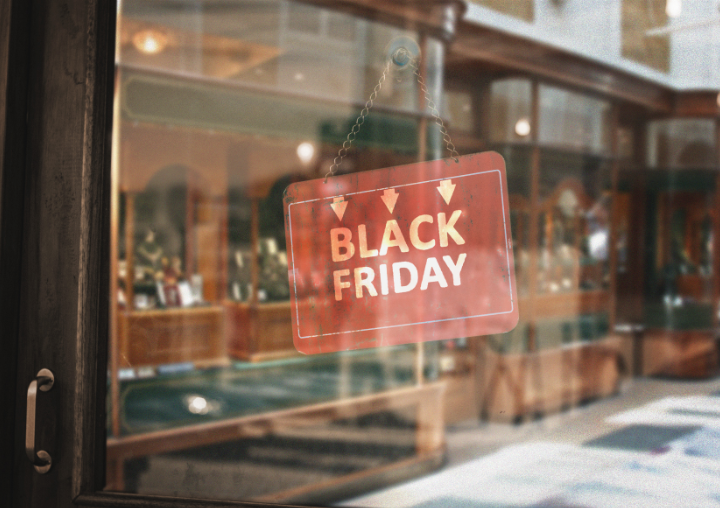
Holiday Trends
Resilient Payments Ensure Holiday Success
A resilient payment system ensures you capture every sale and maintain customer trust throughout the busiest shopping season of the year.

Your holiday sales will be won or lost long before the checkout line forms. Early planning lets you secure inventory, set clear targets, and fix bottlenecks before traffic surges. Shoppers start hunting for deals weeks ahead of peak dates, so brand visibility and readiness matter. Teams that prepare now can move faster, spend smarter, and convert more carts when it counts.
Shoppers expect simple experiences, flexible ways to pay, and timely communications. Clear offers and fast payments help reduce friction at every step. Data should guide where you focus time and budget so every move creates a measurable impact. The ideas here will help you set a strong plan and keep momentum well past December.
Early planning gives you time to set targets, model budgets, and test the parts of your funnel that usually slow down under pressure. You can build a calendar that aligns content, merchandising, pricing, and fulfilment, which keeps everyone focused on the same priorities. Forecasts become more accurate when you pair last year’s results with current inventory and marketing plans. A proactive cadence also reduces stress for frontline staff who need clear playbooks when volumes spike.
Starting early also improves your paid media performance and organic reach. Creative can be tested in smaller waves, which delivers stronger winners before costs rise closer to peak. Partners, suppliers, and couriers can confirm capacity so stock and shipping stay reliable. Teams gain confidence, which shows up in faster response times and fewer costly mistakes.
Strong holiday outcomes start with a calendar, a few trusted playbooks, and tight measurement. Clear roles and realistic timelines help teams ship on schedule without last minute scrambles. Offers should feel special, time-bound, and easy to claim across channels. Every step should be simple, from the first click to the final payment and post purchase care.
|
Strategy |
Goal |
Timing |
Owner |
|
Start BFCM 2025 planning early |
Align teams and timelines |
July to August |
leadership and marketing |
|
Analyze last year’s data |
Find wins and gaps |
July to August |
analytics |
|
Create limited time offers |
Lift conversion and average order value |
September to November |
merchandising |
|
Personalize promotions |
Improve relevance and margins |
August to November |
lifecycle marketing |
|
Optimize website and checkout |
Increase speed and completion rate |
August to October |
ecommerce and product |
|
Offer flexible payment options |
Reduce cart abandonment |
August to October |
payments and finance |
|
Strengthen mobile shopping |
Capture on-the-go buyers |
August to October |
ecommerce |
|
Use email and SMS to re-engage loyal shoppers |
Boost repeat purchase rate |
September to November |
lifecycle marketing |
|
Use social media ads to build early interest |
Grow reach and retargeting pools |
September to November |
paid media |
|
Prepare team and systems for volume |
Maintain uptime and service levels |
October to November |
operations and support |
|
Streamline inventory and fulfilment |
Reduce stockouts and delays |
August to November |
supply chain |
|
Prioritize fraud prevention and security |
Protect revenue and trust |
October to December |
risk and payments |
|
Keep momentum with post BFCM offers |
Extend gains into December |
December |
lifecycle marketing |
Set targets for revenue, margin, and customer growth, then work backward into budgets and timelines. Map creative, offer mechanics, and channel plans to weekly milestones so stakeholders know who does what and when. Lock priority segments and products before production so inventory and marketing stay aligned. Build draft briefs and assets early so you can test messages before traffic peaks.
Shoppers search for peak dates long before they buy, which makes clear timing a simple way to stand out. Black Friday 2025 falls on November 28 and Cyber Monday 2025 lands on December 1. Many buyers still type when is Black Friday 2025 or when is Cyber Monday 2025, so include dates in headers, banners, and emails. A visible calendar creates clarity, reduces questions, and nudges earlier intent.
Start with a simple scorecard that covers traffic, conversion rate, average order value, revenue, and return rate. Add channel-level views for paid search, paid social, email, SMS, and organic, then tag major promotions. Look for segments with high value that also have a lower cost to acquire, so you can allocate budget with confidence. Identify pages or steps where exit rates spiked, then form a list of tests.
Go deeper with cohorts that bought before, during, and after peak dates. Compare repurchase rates and time to second order so you can time your retention plays. Review customer service contacts to spot avoidable friction like unclear shipping timeframes or coupon errors. Convert insights into two or three must fix items for this year so the work stays focused.
Short windows prompt action when the value is clear and the steps are simple. Use strong price cues, clear bundles, and thresholds that feel reachable without discounting too deeply. Countdown timers should be honest and synced with your systems so they match the real end. Stick with plain language on rules so customers know exactly how to qualify.
Design a daily cadence only if your team can support it without errors. Many brands do better with fewer, stronger offers posted with enough notice to plan. Pair each offer with creative sized for every placement so it looks polished on mobile and desktop. Keep a simple raincheck plan for rare cases so you can resolve issues fast.
Start with segments that reflect recency, frequency, and spend, then layer category interest. High-value buyers might prefer early access, and low-value buyers might respond to thresholds that unlock free shipping. Seasonal categories can get spotlighted based on browsing behaviour, which lifts relevance and conversion rate. Keep testing simple and run clean holdouts so you can prove lift.
Use dynamic content blocks in email and SMS to tailor messaging without new templates for every segment. On site, present the top two recommendations inside the cart to avoid clutter. Let shoppers choose from two incentives so they feel in control and more likely to act. Protect margins by capping discounts for groups that are likely to purchase without additional offers.
Speed matters when traffic surges and attention is split. Compress images, reduce scripts, and simplify menus so shoppers find products faster. Audit form fields and remove anything not essential to fulfilment or fraud checks. Add guest checkout and save progress, allowing customers to step away and complete their purchase later.
Make payment the easiest part of the journey. Offer tap to pay options on mobile web and digital wallet options that auto fill information. Show total costs early, including taxes and shipping, to avoid late surprises. Keep error messages clear and human so customers know how to fix issues quickly.
Different buyers prefer different ways to pay, and choice reduces abandonment. Support credit and debit, digital wallets, and buy now pay later options where it makes sense. Present the most popular options first and avoid clutter that adds time. Keep stored payment options current to lower declines and customer support contacts.
Use payment analytics to find declines tied to issuer rules or outdated cards. Test smart retries that pick better times or routes to recover sales. Explain benefits like speed, security, and privacy in plain language at checkout. Train staff to answer payment questions with confidence across online and in-person channels.
Mobile traffic will surge, and the path to purchase must feel seamless from the first tap to the paid transaction. Use clear product tiles, large touch targets, and short copy that still answers key questions. Keep search fast with autocomplete and filters that load quickly. Place the add to cart button near the primary product image so it is easy to find.
Bring mobile features into your paid media and lifecycle messages. Deep links should take shoppers to the exact product or saved cart to reduce steps. Use short, skimmable blocks and real-life photos to build trust on small screens. Treat mobile as the default, not a smaller version of desktop.
Lifecycle channels work best when you set a simple weekly rhythm and honour customer preferences. Build a warm-up sequence that previews offers and sets expectations for timing. Give loyal buyers early access with a clear time window and a unique code that is easy to use. Make the subject line specific and the call to action clear.
SMS should be respectful, short, and valuable. Send only when you have something that feels special or time sensitive. Always include a simple way to opt out so trust stays intact. Use two-way messages for order status updates so customers can get help without waiting.
Paid social can fill remarketing pools and create cost efficient sales before peak. Start with creative that shows value fast, highlights benefits, and feels native to each placement. Rotate formats to test short video, carousels, and static images, then keep the winners. Cap frequency to avoid fatigue and preserve budget for peak days.
Pair interest builders with strong retargeting that reflects on site behaviour. Show cart abandoners the exact product they viewed along with a gentle nudge. Use countdowns only when they reflect a real end time and reward earlier action. Keep your comments monitored and respond quickly so buyers feel heard.
Document roles, escalation paths, and key contacts so issues get fixed fast. Hold run throughs with marketing, operations, and support to test scenarios like site slowdowns or stockouts. Confirm backup plans for power, network, and platform issues with clear thresholds for action. Align staffing to shopping peaks so chat, phone, and fulfilment stay responsive.
Stress test the site and checkout with realistic load and payment flows. Validate rate limits with partners and plan for extra capacity during spikes. Train support teams on the offers, returns policy, and payment flows so answers are consistent. Create a short daily standup during peak to share results and remove blockers quickly.
Start with a clear forecast by category, then build safety stock for items with long lead times. Use simple rules that reserve a small percentage of units for high value customers. Sync inventory across online and in-store platforms to ensure accurate availability everywhere. Show realistic shipping timeframes early to set expectations and reduce cancellations.
Batch orders where possible and pre pack bestsellers to gain speed. Offer click and collect or pickup to reduce shipping pressure and delight local buyers. Provide order status updates that are timely and helpful, not just confirmations. Track late deliveries and refund fees from carriers when service level agreements are missed.
Fraud attempts rise when volumes spike, so tighten controls without adding friction. Use risk scoring and step up checks on atypical orders, high value items, and mismatched data. Keep address verification and card security checks tuned to your risk appetite. Make refund and return policies simple, fair, and easy to find.
Train teams to spot social engineering and suspicious contacts that target staff accounts. Keep software patched and access scoped to the minimum needed for each role. Monitor chargebacks daily to ensure a timely response with the necessary evidence. Clearly communicate your security posture to reassure buyers at checkout.
December can deliver strong profits when you plan a calm, customer-first cadence. Shift the tone from door crasher deals to value adds like bundles, gifts with purchase, or extended returns. Thank first time buyers with a personal note and a small incentive for a second order. Invite loyal customers to share wish lists or gift guides for friends and family.
Keep offers simple and limit the steps to claim them. Promote free shipping thresholds that make sense for your average order value. Feature restocks and limited quantities to encourage timely action without pressure. Build a plan that carries through the final shipping cutoff and into gift card season.
Strong execution across these plays gives you a repeatable way to grow holiday sales. Clear goals and simple processes help teams act with confidence under pressure. Customers remember how easy or stressful their experience felt, and that memory shapes long term value. Small improvements across payments, messaging, and service can compound into big outcomes.
Careful measurement turns busy weeks into clear learnings that lift profit. Every team should know which numbers matter most and how they can influence them. Focus on a small set of metrics that link to revenue, margin, and customer value. Publish results daily so people can make timely adjustments without guesswork.
Clear reporting helps people move money to what is working today, not last week. Teams can spot friction and address it before customers feel it. Small wins add up when you catch them early and press your advantage with confidence. A culture of simple tests and quick reads creates compounding gains.
Retention work after peak weeks can deliver standout profit at a lower cost to acquire. The goal is to help buyers feel valued, understood, and well supported. Offers should reward loyalty without resetting expectations that only discounts matter. Messaging should feel timely, human, and specific to each person’s interests.
Welcome flows should feel warm, clear, and helpful. Start with a thank you note that shares what makes your business special and what to expect next. Follow with product care tips, how to exchange or return, and a simple way to reach support. Close the sequence with a modest incentive or bundle suggestion that fits their first order.
Time the second purchase ask based on item type and expected usage. Consumables may require a reminder every three to four weeks, while durable goods may need more time. Use browse signals to promote accessories that complement the first item. Keep the tone helpful and avoid heavy pressure that could cheapen the relationship.
Use post purchase data to shape a short series that meets each buyer where they are. If someone bought a gift, acknowledge it and suggest gift wrap or cards for the next occasion. Show social proof from similar buyers so confidence grows with every touch. Keep each message focused on one action so choices stay simple.
Personal touches can lift response without adding cost. A note from store staff or a short thank you video can feel special. Surveys with two or three questions can reveal what to improve next. Follow through on what you learn and share the updates with your audience.
Treat your top segments to early access, limited-run drops, or small-batch releases. These buyers respond to recognition and convenience more than steep discounts. Make access simple with a one-click link and a clear time window. Limit quantities to protect the margin while keeping the offer meaningful.
Track how this group behaves across the season. Measure the repeat rate, average order value, and referral actions to refine your approach. Consider a members page where perks live year-round for easy reference. Maintain a tone that is appreciative and specific, rather than generic.Some buyers will lapse after the holidays, which makes a steady win back plan useful. Begin with reminders that highlight the product's benefits and positive reviews. Add a gentle offer if there is no response, then expand the window with seasonal picks. Stop after a few touches and try again later with fresh creativity.
Segment win back audiences by time since last order and category interest. Use different messages for three months, six months, and twelve months without sounding repetitive. Make it simple to update preferences or pause messages to maintain trust. Celebrate returns with a small surprise that feels earned.
Retention is a year-round habit, not a single campaign. Businesses that act with care, clarity, and consistency see stronger margins over time. Customers who feel understood are more likely to return and recommend you. Small, steady touches can be just as powerful as big moments during peak season.
Canadian merchants tell us that holiday success comes down to speed, reliability, and support when the stakes are high. We focus on removing friction at checkout, protecting every transaction, and keeping your systems available when traffic surges. Our solutions help you accept payments online and in person with simple set up, clear reporting, and fast approvals. Teams also get access to data tools and practical guidance that make it easier to spot issues and act quickly.
We bring experience from working with businesses across Canada, which helps us
recommend steps that fit your size and industry.
Moneris payment options give your customers choice, which reduces cart abandonment and increases approval rates without extra steps. Risk controls keep fraud in check while allowing trusted buyers to pay with ease. Ongoing support means you have a partner to call when you need help most, not a ticket queue.
We are committed to powering Canadian commerce with secure, reliable, and helpful payment solutions. When you are ready to set your BFCM 2025 plan, we will be here to help you turn intent into impact with confidence.
Holiday Trends
A resilient payment system ensures you capture every sale and maintain customer trust throughout the busiest shopping season of the year.

Holiday Trends
Plan early, simplify offers, connect channels and prepare payments so you capture demand and build lasting customer relationships through the season.

Holiday Trends
Retailers that prepare early, streamline checkout, connect channels, and protect uptime turn the biggest sales weekend into lasting revenue.

Holiday Trends
Black Friday was the top shopping day in 2024, driven by early promotions, mobile shopping, and regional spending shifts. Learn what small businesses should focus on in 2025 to plan better and sell smarter.